Mechelen
Detail
Date of first edition: 1581
Date of this edition: 1606
Dimensions (not including margins): 33,5 x 45 cm
Dimensions (including margins): 40,6 x 51,2 cm
Condition: excellent. Sharp copper engraving printed on paper. Centre fold is as published. Superb old hand coloured. Wide margins.
Condition rating: A+
Verso: Latin text
Reference: Van der Krogt 4, 2664; Taschen, Br. Hog., p.220.
From: Civitatis Orbis Terrarum (III: Urbium praecipuarum totius mundi, liber tertius), date of first and of this edition 1581, Gottfried von Kempen, Köln. Engraved after a plan by Jacob van Deventer. Van der Krogt, IV-2,1, 41:1-3: Page 12, Last line ending “…ligitur”, last word first line “auctoribus”.
In stock
Mechelen commented by Braun
“In the year 1473 Charles the Bold moved the Supreme Court, also called the Royal Council or Assembly, to Mechelen: he himself is the supreme judge in the company of 34 other lords. Initially this council accompanied his Lordship at all times and followed him wherever he went; in the absence of the sovereign the Chancellor presided over all others in his place. One could appeal to it from almost all the courts in Belgium.”
Original title: Nitidissimae Civitatis Mechlineensis in meditullio Brabantiae sitae, exactis: delineatio
Translation of cartouche text: Faithful view of the illustrious town of Mechelen, in the middle of Brabant.
Taschen on Mechelen
Franz Hogenberg’s birthplace is illustrated twice. In the view presented in Volume I the cityscape is dominated by the massive tower belonging to the cathedral of Sint-Rombout, which measures almost 100 m in height. Behind the cathedral to the right lies the Onze-Lieve-Vrouwe church built in the Brabantine late Gothic style. In the present plate Mechelen is seen in a bird’s-eye view from the northwest. Clearly apparent is the almost circular shape of the inner city, which has already spread beyond the bounds of the canal ringing the old city wall. In the Middle Ages staple rights and the cloth trade brought Mechelen great prosperity. In 1336 the city passed to the Duchy of Brabant, later to Burgundy, and developed into a highly regarded centre of commerce. The collapse of the cloth industry prompted the development of new areas of manufacturing, such as cannon and bell founding. In 1477 Mechelen passed to the Habsburgs and from 1507 to 1530, under the regency of Margaret of Austria, was capital of the Habsburg Netherlands. In 1559 Mechelen became an archbishopric and over the course of the Wars of Religion grew into a centre of the Counter-Reformation. For some time it was also the seat of the highest tribunal of the Habsburg Netherlands.
Related items
-
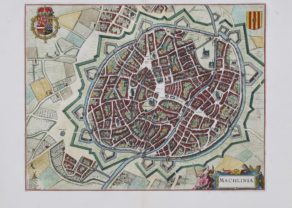
Mechelen (Malines) – Machlinia
by Joan BlaeuPrice (without VAT, possibly to be added): €1 200,00 / $1 332,00 / £1 068,00ON HOLD -
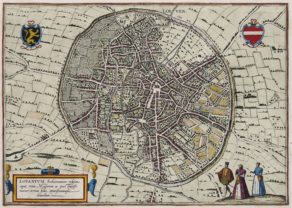
Leuven – Lovanium, Brabanticarum urbium caput…
by Georg Braun and Frans HogenbergPrice (without VAT, possibly to be added): €900,00 / $999,00 / £801,00 -
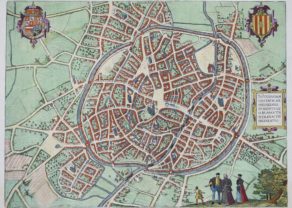
Mechelen – Nitidissimae Civitatis Mechlineensis…
by Georg Braun and Frans HogenbergPrice (without VAT, possibly to be added): €500,00 / $555,00 / £445,00
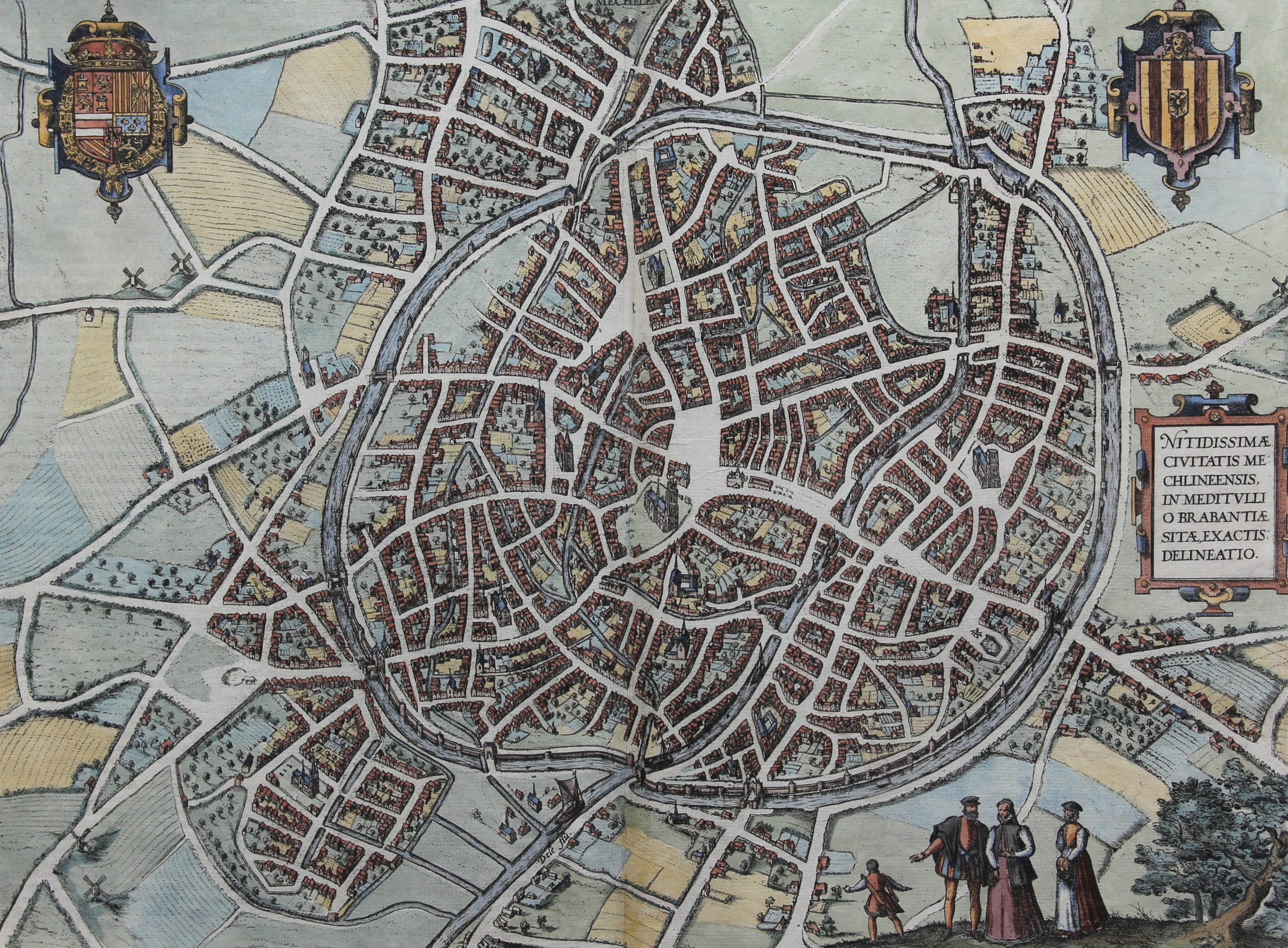
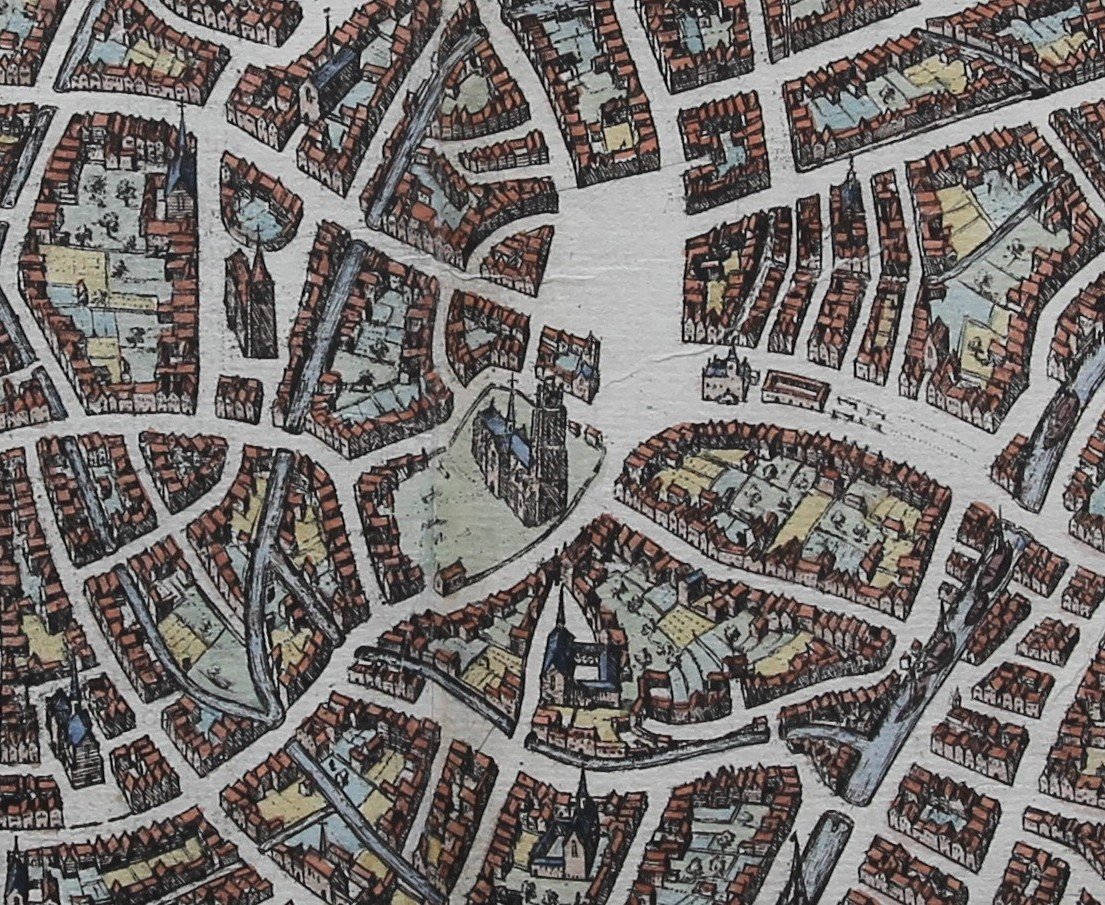
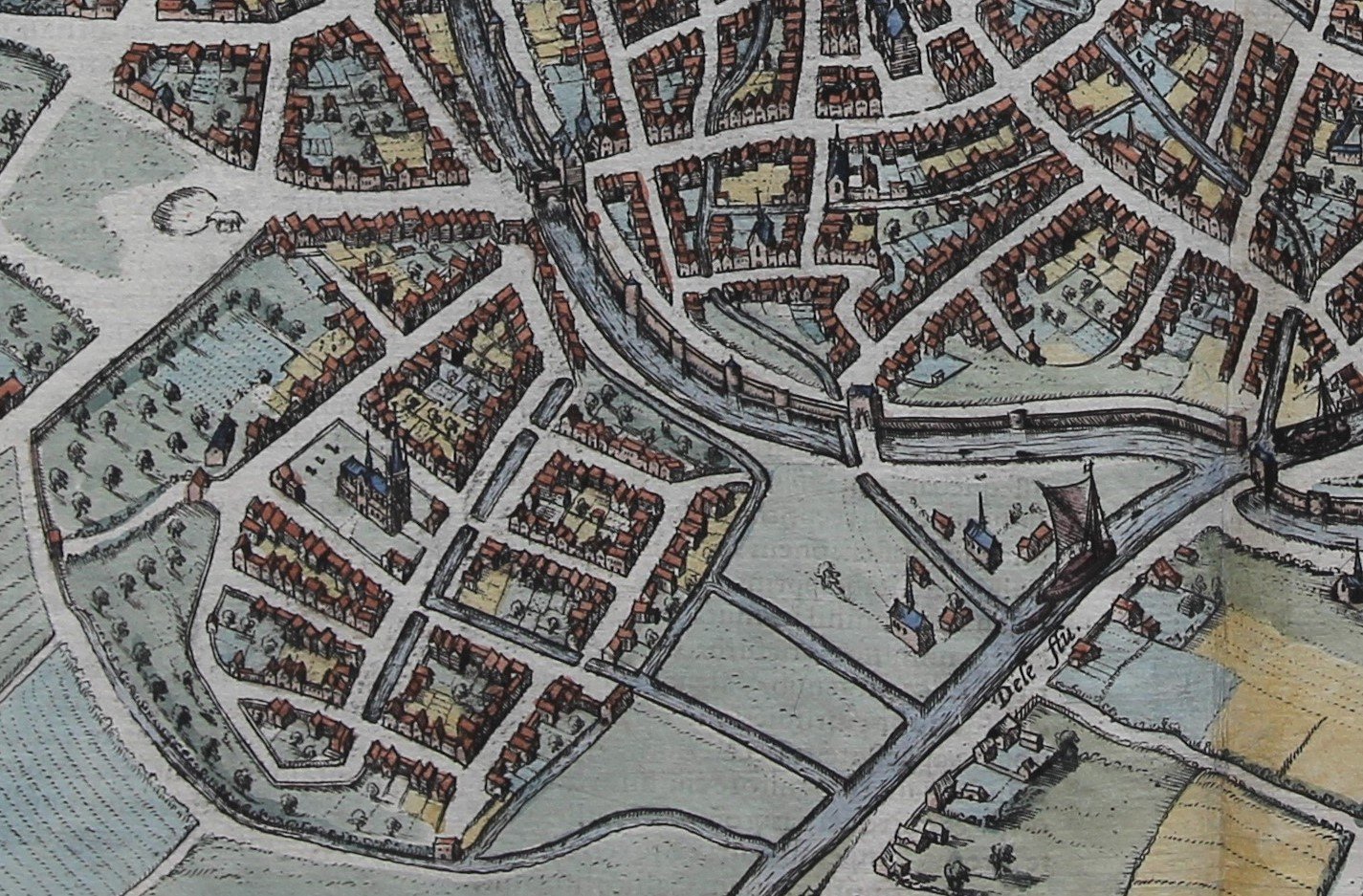
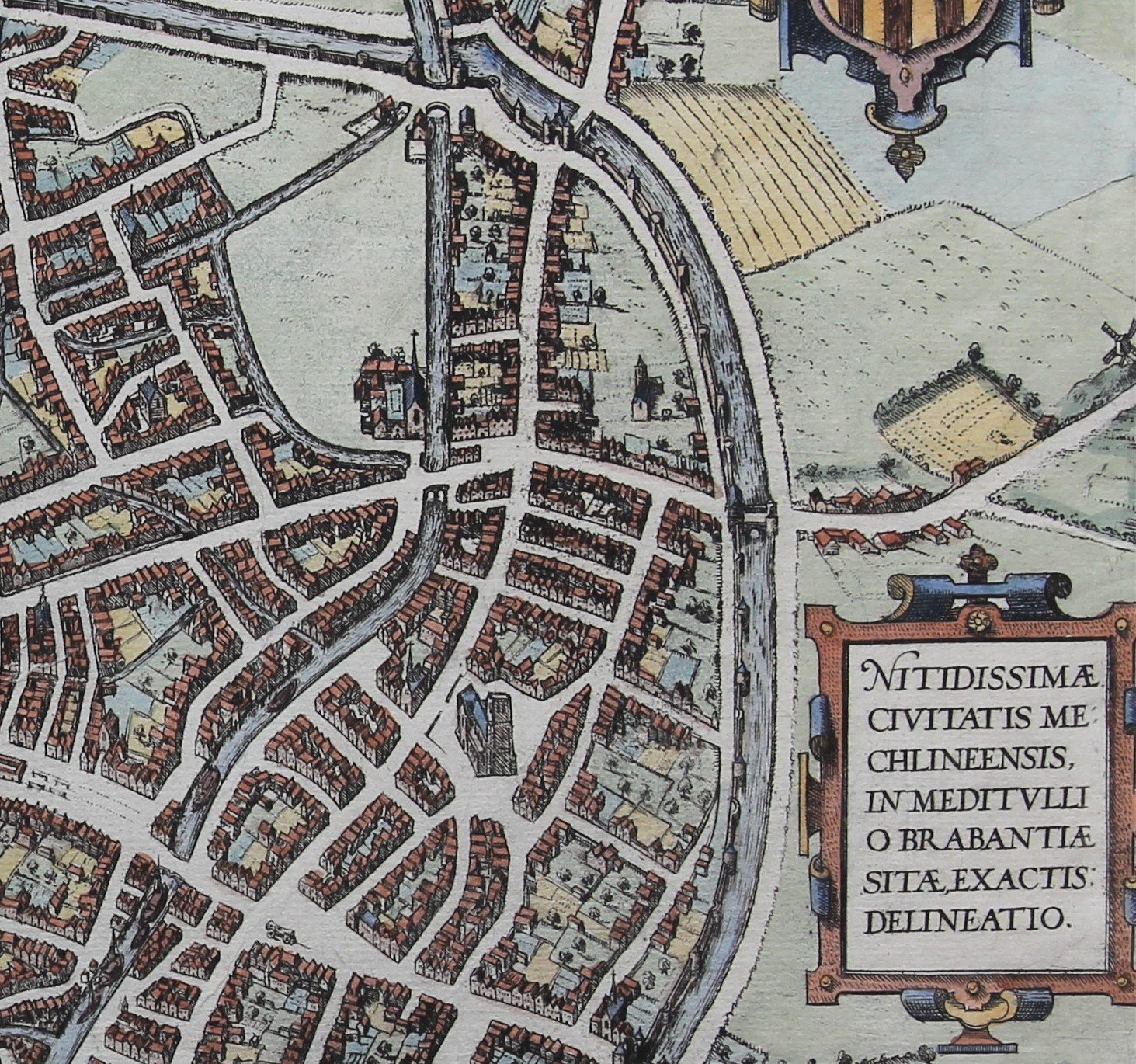
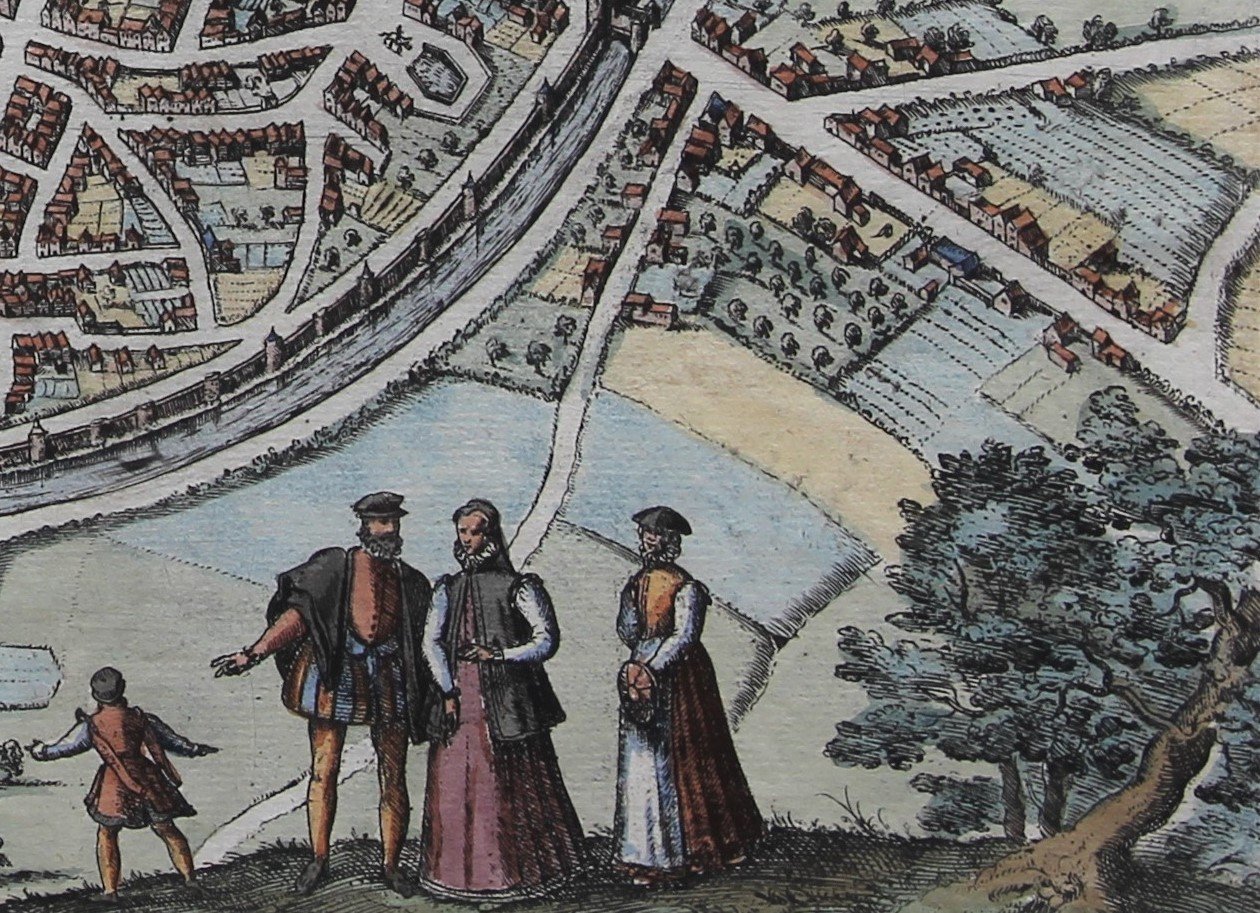
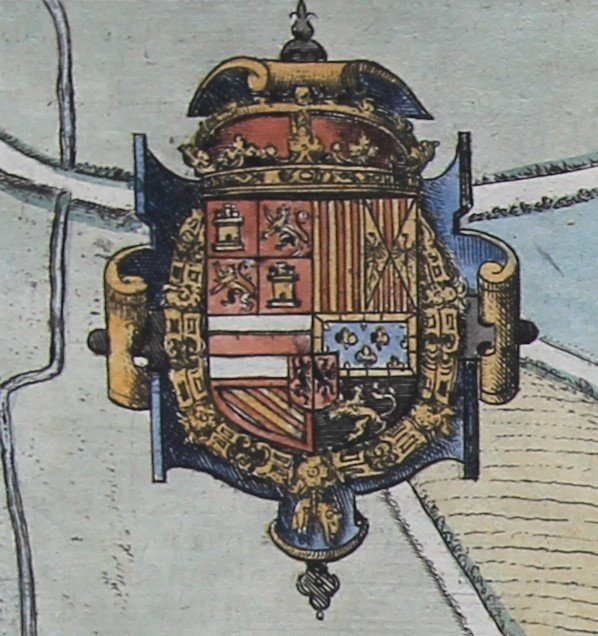
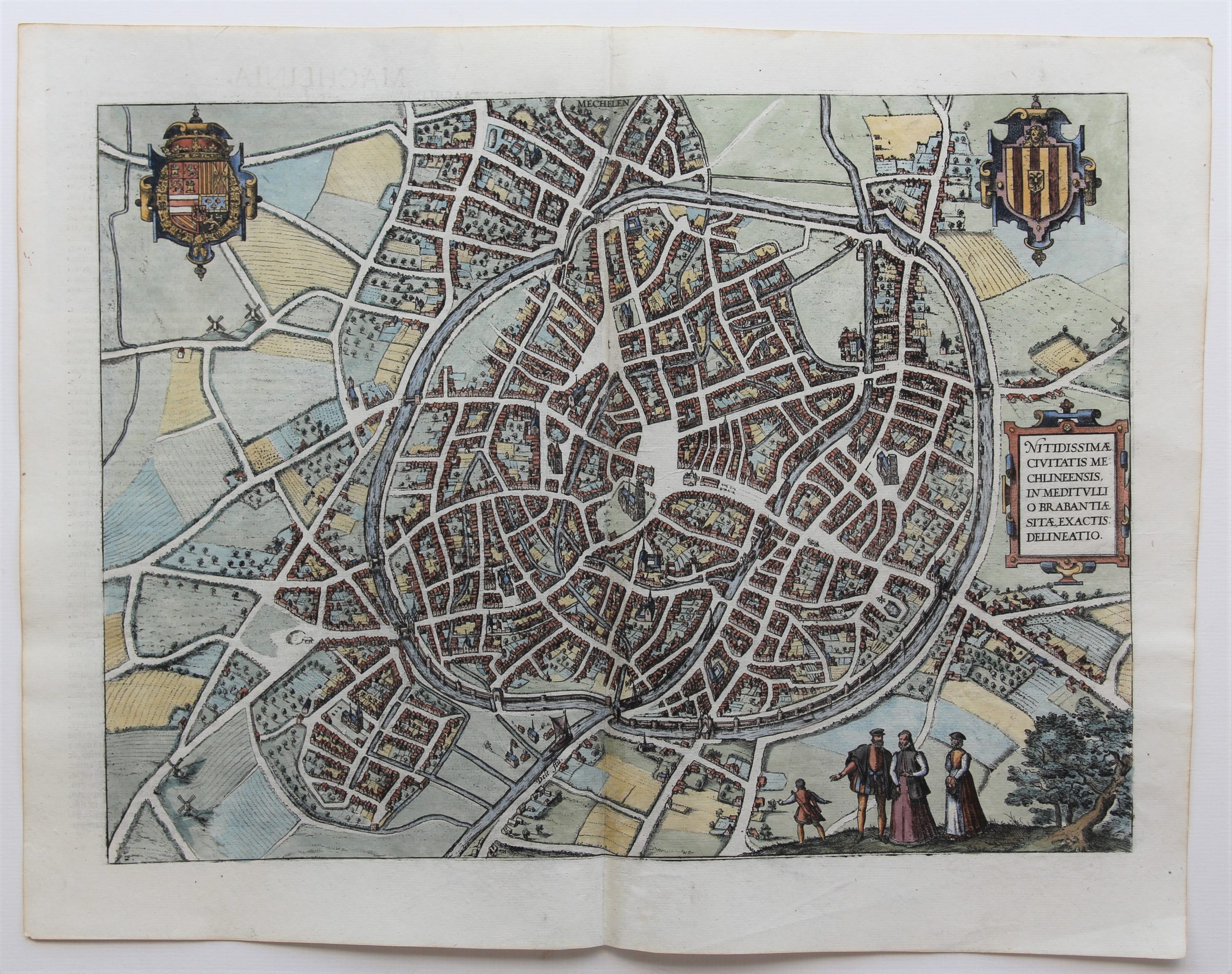
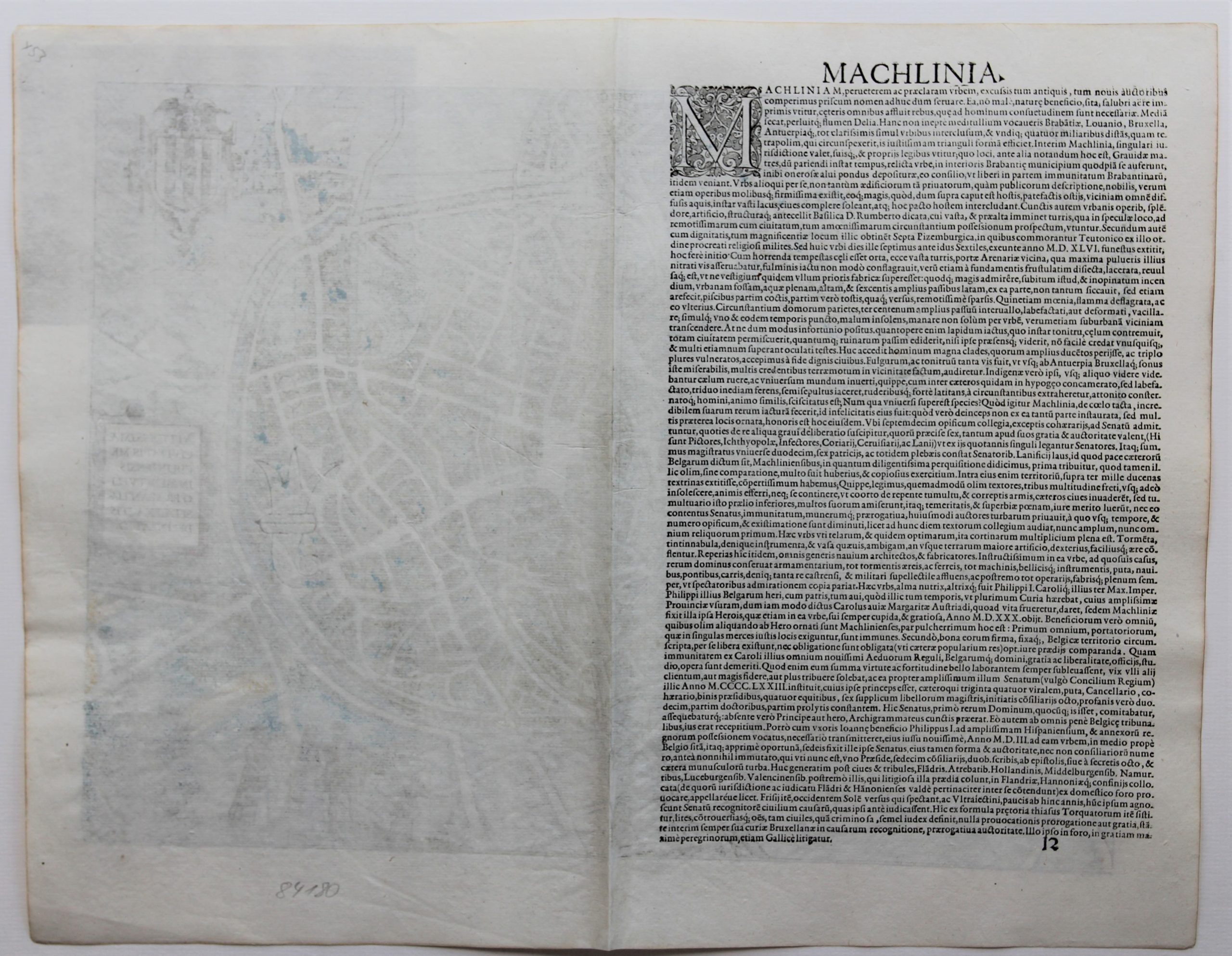
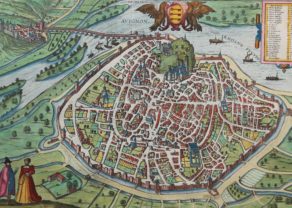
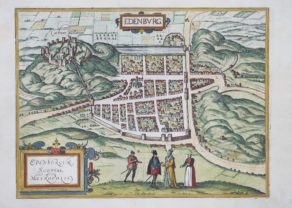
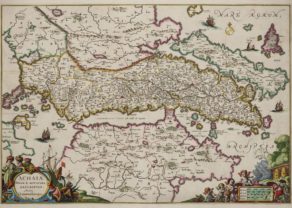
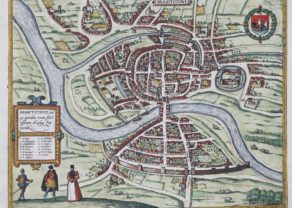
Comparison
It’s interesting to compare the two city plans of Braun & Hogenberg of 1581 with the map by Joan Blaeu of 1649. The medieval walls were replaced by renaissance walls, but finally, with the exodus during the Eighty Year’s War, the outlook of city had not changed that much.